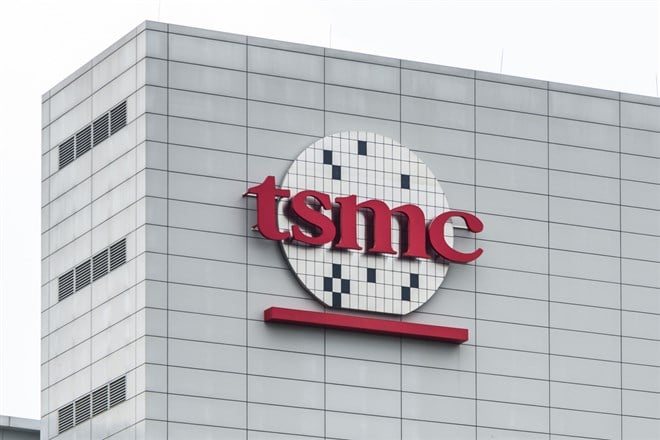
-Net income for TSMC came in at $7.9 billion for the quarter surpassing analyst estimates.
-Revenue was up 30% y-o-y and came in above guidance at $18.6 billion.
-Management has said that supply of chips will continue to be tight, and customers will continue to draw down inventory throughout the year.
Taiwan Semiconductor (NYSE: TSM) is a Taiwanese multinational contract semiconductor manufacturing and design company. The company has over 480 clients, including Apple (NASDAQ: AAPL), Huawei, Qualcomm (NASDAQ: QCOM), Xilinx, Nvidia (NASDAQ: NVDA) and AMD (NASDAQ: AMD) . The stock was trading higher by 2.5% in pre-market after earnings were released.
Global chip demand across industries continues to cause shortages. TSMC continues to benefit from high demand but has also struggled in recent times to keep up with demand. Global chip demand is expected to grow anywhere from 9-10% this year, surpassing previous analyst estimates, that were projecting mid-single digits growth.
The biggest source of demand for the second quarter was automotive, HPC, and IoT-related demand. Automakers struggled through 2021 to meet chip demand, which resulted in revenue being weaker for many auto-makers. As a result, the current quarter witnessed a surge in demand, which helped improve revenue. Technology contributed 21% to demand, meanwhile, smartphones were responsible for 38% of the revenue. The rest of the demand came from automotive, DCE, IoT, and ‘others’. North America continues to be the biggest source of demand, followed by China, EMEA, and then the rest of Asia.
TSMC’s management did re-iterate that it will continue to invest in plants, as demand is expected to remain tight throughout the year. TSMC has planned to build 6 plants in the U.S. and is also planning to build plants in countries such as Japan. The company had set out $44 billion in CAPEX for 2022 but with demand softening, management has guided that it will move some of that capacity to next year as smartphone, and PC demand remains shaky. Utilization rates remain full for the year and chip demand has been resilient despite inflationary pressures, so revenue for 2022 should continue to remain strong. Total capital expenditure for the quarter came in at $7.34 billion and TSMC is on target to achieve at least $30-35 billion in investments for the year.
TSMC posted stronger gross and operating margins than analysts expected as well. The most significant factor driving the increase in margins was pricing power, and despite cost pressure from raw materials, TSMC was able to overcome the issue by raising prices. Cash has also increased by 21% to $3.5 billion, which could result in an increase in dividends.
TSMC’s competitors such as Qualcomm (NASDAQ: QCOM) and Intel (NASDAQ: INTC) have struggled with demand and the stocks are down from their 52-week high. Likewise, TSMC is also down from its 52-week high but continues to trade at a premium relative to its competitors. This is a reflection of the quality of customers that TSMC has, customers such as Apple, Nvidia, and AMD, all of whom have superior products.
Valuation
TSMC currently trades at around 19x price to earning and has a return on investment of around 20%, which is quite high for such a capital-intensive company. Debt to equity also remains low at 0.35 and the overall health of the balance remains quite healthy. Considering the high rate of growth, a P/E of 19x and forward earnings of 14x can be considered cheap for a stock that is expected to outperform for the foreseeable future. The stock currently yields at 2.3%, which may be a bit low for the current macroeconomic environment.
Risks
The biggest risk for TSMC remains down-market demand. Automotive demand remains on firm footing with backlogs and low inventory plaguing the market. But PC demand and data center demand could wane as the year progresses. Smartphone sales have also started to decline due to China and a slowdown in demand. TSMC’s management has warned that they are constantly re-assessing risks in order to ensure that CAPEX remains within guidance.
Furthermore, a shortage of raw materials and increasing costs could also exacerbate the current chip shortage. Semiconductors primarily rely on silicon, and despite increases in output, a shortage of the raw material remains an issue. Finally, both raw materials and semiconductor chips rely on shipping ports that continue to be congested
Beyond business-related risks and geopolitical risks are an issue as well. Should China invade Taiwan or stop the supply of key raw materials, you could see a significant shortage of chips. TSMC has tried to address this issue by increasingly moving supply out of Taiwan and is increasingly looking to hedge this geopolitical risk, but it takes time to set up factories, and until then the environment remains uncertain.
Overall, TSMC has a lot of positives going for it. The current environment is certainly favorable for the chip manufacturer. Investors could see TSMC as a part of a broader diversified portfolio.













